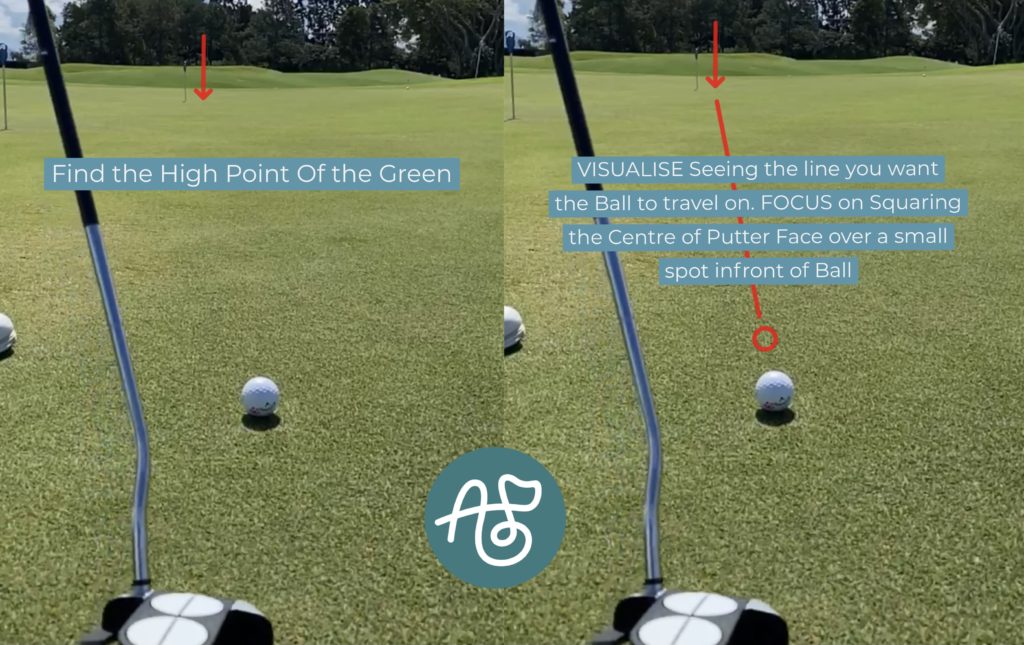Correct your putting: why analysing your putts actually works
Putting can be one of the greatest mental challenges in golf. Sometimes you feel like you’ve read the green correctly and set everything up right and still you miss your putt.
Then the questions start. Why didn’t my putt go in? What’s wrong with me? Why am I so useless at putting? And so on!
Let’s put a stop to these distractions for good with a brilliant new technique that actually works to correct your putting stroke. In this blog I want to teach you:
- A new way to review your putt straight away on course
- How to create patience with your putting
- The most effective way to analyse your putting stats after a round
- How (and why) to visualise every putt going in the hole every time
Letting go of the need to always hole your putts
I will never forget when I read the stat out of a Stan Utley book, “The Art of Putting”. He explained that if we were to set a machine to roll ten identical twenty-foot putts along the ideal line at the ideal speed one or two of them wouldn’t go in because of nature’s imperfections.
What? You mean that even a machine can’t hole every putt every time even when all the variables are played perfectly? That’s a huge comfort!
How to review your putt for immediate feedback on course
The first question I want you to ask yourself after you hit your putt on course (even when it didn’t go in) is this: was that a good putt?
If your answer is yes, fantastic! Pat yourself on the back and move on. Trust the process, stay patient. The next one will go in.
If your answer to my question is no, go through your check list of healthy questions so you can find an instruction-based answer to correct your putting errors. Was it my aim? Was it my distance control? Was it my tempo?
If you can pinpoint the part of your putting routine that was off balance, you can try to address this next time without knocking your confidence completely by snowballing thoughts about being a ‘bad putter’.
How to create patience with your putting
I’m guilty of being very impatient in many parts of my life. However on the golf course I have trained myself to be one of the most patient people around. How? By developing a patience mindset.
When you want to improve a part of your game – and you’ve been working hard through drills and practice – it’s easy to get annoyed and impatient when you don’t see results.
However, by using healthy questions to get an instruction-based answer you can gain clarity over your putting.
How to analyse your putting stats after a round
Answers create effortless patience in our golf. On course, this means asking helpful questions around aim, tempo and distance control. Of course, it means using facts and game statistics to build something to work on.
Next time you play, I want you to complete this exercise:
- Ask how many good putts did I hit today?
- After reviewing my stats, I can see I had 34 putts.
- If I review each putt individually, I can see I hit 28 really good putts.
- This gives me clarity that 6 putts were a problem.
- Now I can question technically what happened to each individual putt to determine my putting error.
This is a mind-blowing exercise. Getting into the habit and finding the core problem enables you to find a solution faster and become far more patient and effective putter.
How (and why) to visualise every putting going in the hole every time
When you play, how often do you use your imagination to watch your ball travel from start line to finish and see that ball fall into the cup?
I tell my students to see the ball go in at least 10 times before they putt. Yes, 10 times! This exercise may take you out of your comfort zone but this is when I need you to dig deeper, rise to the challenge and convince yourself that:
THIS BALL HAS NOWHERE ELSE TO BE BUT IN ITS HOME!
On average, it takes a person 66 days to create new habits. If you can’t visualise now, force yourself for at least 66 days and let’s see if it becomes more automatic. Having a 66-day timeline has most certainly injected patience into my students’ visualisation journey as it will for you.
Let me know how you go with these tips on how mindset can help you correct your putting and become a better putter: on course, in your post-game analysis and through powerful visualisation. I’d love to hear from you!

